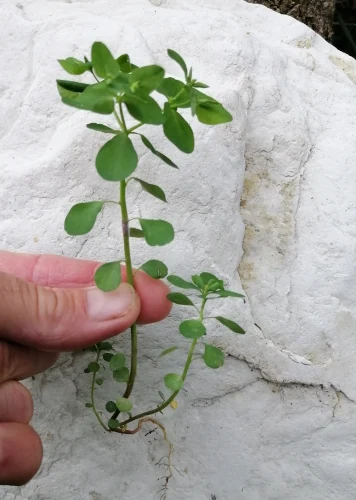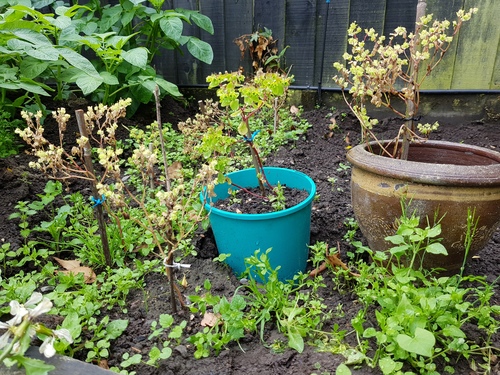Euphorbia peplus
Commonly known as petty spurge or milkweed, is a small annual herbaceous plant native to Europe and Asia but widely naturalized in many parts of the world, including the southern hemisphere. It often grows in gardens, cultivated lands, and waste areas.
Description
- Height: Typically 5–30 cm tall.
- Leaves: Oval to oblong, light green, and arranged alternately on the stems. Leaves are about 1–3 cm long.
- Stems: Erect, often branching, and contain milky latex.
- Flowers: Small, yellow-green, inconspicuous, and clustered at the ends of the stems.
- Seed capsules: Contain tiny, smooth seeds that are easily dispersed.
Uses
- Traditional Medicine: Historically, Euphorbia peplus has been used in folk remedies. The latex is noted for treating warts, corns, and skin lesions.
- Modern Medicine: The plant's latex contains ingenol mebutate, an active compound used in pharmaceuticals to treat actinic keratosis (a pre-cancerous skin condition).
- Ecological Role: As a pioneer species, it helps stabilize disturbed soils and provides food for some insects.
Caution: The latex is toxic and can cause skin irritation or severe reactions if ingested. Handle with care.
Propagation
Euphorbia peplus propagates by seed, with each plant producing hundreds of seeds capable of germinating under a variety of conditions.
- Seed Collection: Harvest seeds as the capsules dry out, typically after flowering in late spring or early summer.
- Sowing:
- Sow seeds directly into the soil or seed trays in autumn or early spring.
- Seeds need light to germinate, so scatter them on the surface and press lightly into the soil without covering.
- Germination: Germination occurs within 2–4 weeks under mild conditions (10–20°C).
Cultivation
Climate
- Thrives in temperate to subtropical regions of the southern hemisphere.
- It prefers cool to warm conditions and may behave as a winter annual in hot climates.
Soil
- Grows best in well-draining, light-textured soils.
- Tolerates poor, sandy, or moderately fertile soils with a pH range of 6.0–7.5.
Light
- Grows in partial shade to full sun, though it prefers semi-shaded areas.
Water
- Requires minimal watering once established. Water sparingly as the plant is drought-tolerant.
Maintenance
- Minimal care is needed as the plant is hardy and self-seeding.
- To prevent overpopulation, remove plants before they set seed.
Pests/Diseases
- Generally pest-resistant. Avoid excessive moisture to prevent root rot.
Cultural Considerations
- Can become invasive in some regions. Monitor growth and remove unwanted seedlings promptly.
Euphorbia peplus is a low-maintenance plant suitable for naturalized or wildflower gardens but should be cultivated with care due to its toxicity.

